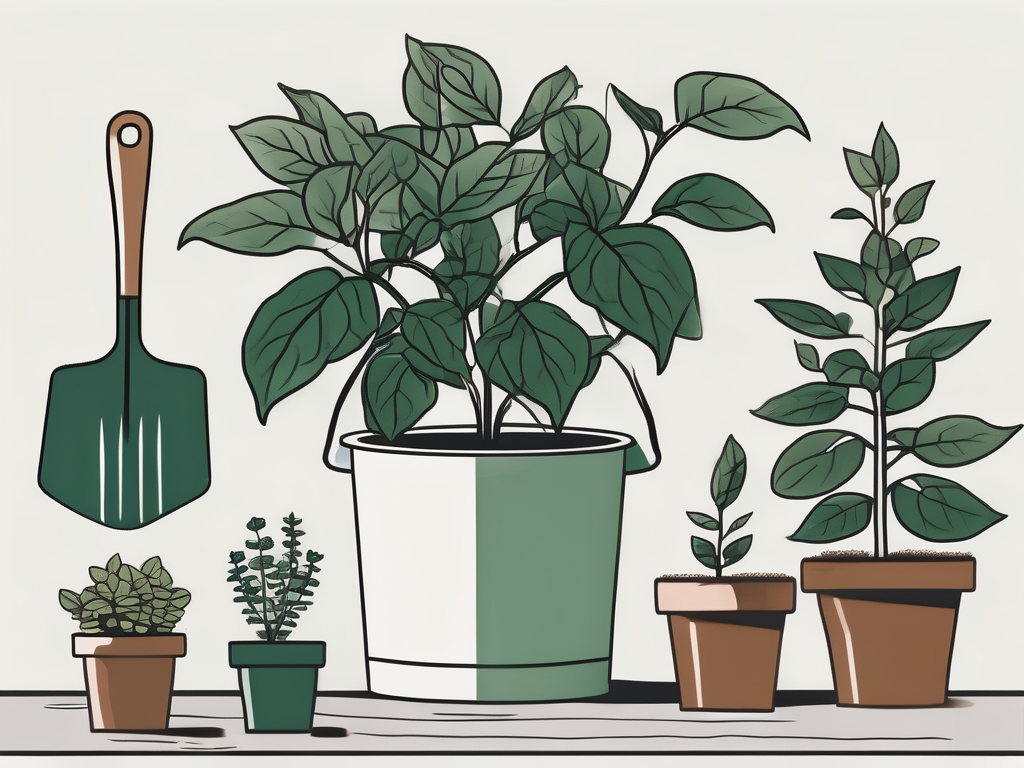
Boston ferns are the kind of plants that can make any space feel like a serene, lush oasis. They have this timeless charm that blends effortlessly into both classic and modern interiors. But did you know there are several types of Boston ferns, each with its unique characteristics? If you're looking to add this lovely greenery to your home, understanding the differences can help you choose the perfect one for your space.
In this article, we'll explore the various types of Boston ferns, how to care for them, and how to incorporate them into your home decor. Whether you're a seasoned plant parent or just starting out, there's something here for everyone. Let's get started!
Traditional Boston Fern
The traditional Boston fern, scientifically known as Nephrolepis exaltata 'Bostoniensis', is probably what most people picture when they think of a fern. Its arching fronds and soft, feathery appearance make it a classic choice for both hanging baskets and pots. This type of fern is beloved for its ability to add a touch of nature to any indoor setting.
Caring for the traditional Boston fern is relatively straightforward, although they do have some specific needs:
- Light: They prefer indirect light. A bright room with filtered sunlight is ideal.
- Water: Keep the soil consistently moist, but not soggy. Watering once the top inch of soil feels dry is a good rule of thumb.
- Humidity: Boston ferns thrive in humid environments. Consider using a humidifier or placing a tray of water near the plant to boost humidity.
Incorporating a traditional Boston fern into your home is a great way to bring in a classic, natural element. They look especially stunning when placed in a hanging basket or on a plant stand, allowing their fronds to cascade freely.
Fluffy Ruffles Fern
If you're looking for something with a little more texture, the Fluffy Ruffles fern might be the perfect fit. This variety has curly, ruffled edges that give it a fuller, more textured appearance compared to the traditional Boston fern. It's like the fern equivalent of a voluminous hairstyle, adding a touch of drama and interest.
The Fluffy Ruffles fern shares similar care requirements with its traditional cousin:
- Light: Bright, indirect light is best. Avoid direct sunlight, which can scorch the leaves.
- Water: Maintain evenly moist soil, but ensure good drainage to prevent root rot.
- Humidity: High humidity is essential. Regular misting or a humidity tray can help keep this plant happy.
With its distinctive ruffled fronds, the Fluffy Ruffles fern can be a striking focal point in any room. It pairs well with minimalist decor, where its texture can really stand out.
Maidenhair Fern
While not a true Boston fern, the Maidenhair fern is often grouped with them due to its similar care requirements and appearance. Its delicate, fan-shaped fronds and wiry black stems give it a unique, ethereal beauty that makes it a favorite among plant lovers.
Caring for a Maidenhair fern can be a bit more challenging, but the rewards are well worth the effort:
- Light: Prefers indirect light. Too much sun can be damaging, so keep it in a shaded spot.
- Water: Needs consistently moist soil. Avoid letting it dry out completely, which can harm the plant.
- Humidity: High humidity is crucial. Consider placing it in a bathroom or using a pebble tray.
The Maidenhair fern's delicate fronds make it perfect for creating a soft, romantic atmosphere. It looks lovely on a windowsill or as part of a larger plant arrangement.
Lemon Button Fern
The Lemon Button fern, another relative of the Boston fern, is a compact variety with small, round leaflets that give off a subtle lemony scent when brushed. It's a charming addition to smaller spaces or as part of a mixed plant display.
Here's how to care for a Lemon Button fern:
- Light: Enjoys bright, indirect light but can tolerate some lower light conditions.
- Water: Keep the soil consistently moist, but not waterlogged.
- Humidity: Prefers higher humidity levels, so misting or a nearby water source can be beneficial.
The Lemon Button fern is a great choice for those who want the look of a Boston fern but with a bit more compactness. Its small size makes it versatile for any room, from a cozy bathroom to a bustling kitchen.
Kimberly Queen Fern
The Kimberly Queen fern, also known as Nephrolepis obliterata, is a robust variety that's known for its upright, sword-like fronds. Unlike the traditional Boston fern, the Kimberly Queen is more tolerant of sun and less demanding in terms of humidity.
Here's what to keep in mind when caring for a Kimberly Queen fern:
- Light: Can handle more direct sunlight than other ferns, but still prefers indirect medium to bright light.
- Water: Water regularly to keep the soil moist, allowing the top inch to dry between waterings.
- Humidity: While it appreciates humidity, it does well in average household conditions.
The Kimberly Queen fern's upright growth makes it an excellent choice for floor pots or as a backdrop for other plants. Its bold structure adds a touch of elegance and formality to any space.
Roosevelt Fern
The Roosevelt fern is a lesser-known variety of Boston fern that boasts a unique appearance with its long, drooping fronds that have a more delicate texture. It's a bit like the traditional Boston fern's more whimsical cousin, offering a softer, more airy look.
Here's how to care for a Roosevelt fern:
- Light: Prefers indirect, filtered light. Direct sunlight can cause the fronds to fade.
- Water: Keep the soil moist, but be careful not to overwater. Allow the top layer to dry slightly between waterings.
- Humidity: High humidity is best, so consider placing it in a humid room or using a misting bottle.
The Roosevelt fern's graceful fronds make it a beautiful choice for hanging baskets or as a centerpiece on a large table. It brings a touch of elegance and movement to any room.
Dallas Fern
The Dallas fern is a more compact and slower-growing version of the traditional Boston fern, making it ideal for those with limited space or who prefer a plant that's a little less demanding on maintenance. Its dense, bushy growth adds a splash of green without overwhelming a room.
When caring for a Dallas fern, consider the following:
- Light: Thrives in bright, indirect light but can adapt to lower light conditions.
- Water: Keep the soil evenly moist, but ensure proper drainage to prevent water logging.
- Humidity: While it appreciates humidity, it can tolerate average home conditions.
The Dallas fern's compact size and easy-going nature make it perfect for desktops, small shelves, or as part of a larger plant collection. It's a wonderful choice for those who want a Boston fern without the commitment of frequent upkeep.
Asparagus Fern
While technically not a true fern, the Asparagus fern often gets mixed in with Boston ferns due to its similar appearance and growth habits. It's known for its feathery, light green foliage and slightly more forgiving nature when it comes to care.
Here's how to keep an Asparagus fern thriving:
- Light: Prefers bright, indirect light but can tolerate some direct sun exposure.
- Water: Water regularly, allowing the top inch of soil to dry out between waterings.
- Humidity: While it prefers humidity, it is more adaptable to different conditions than some other ferns.
The Asparagus fern's airy fronds add a sense of lightness and movement to any space. It's a versatile plant that looks great in hanging baskets, on plant stands, or cascading from a high shelf.
Final Thoughts
Boston ferns and their relatives offer a range of options for adding greenery and life to your home. Whether you prefer the classic look of the traditional Boston fern or the unique textures of the Fluffy Ruffles and Maidenhair varieties, there's a fern for every style and space.
At Cafe Planta, we're here to help you find the perfect plant for your home. We offer a variety of houseplants, including Boston ferns, and we're always happy to assist with plant care tips. Feel free to reach out to us via email or connect with us on Instagram with any questions. We believe that plants bring people together and inspire us to connect with nature and each other.












